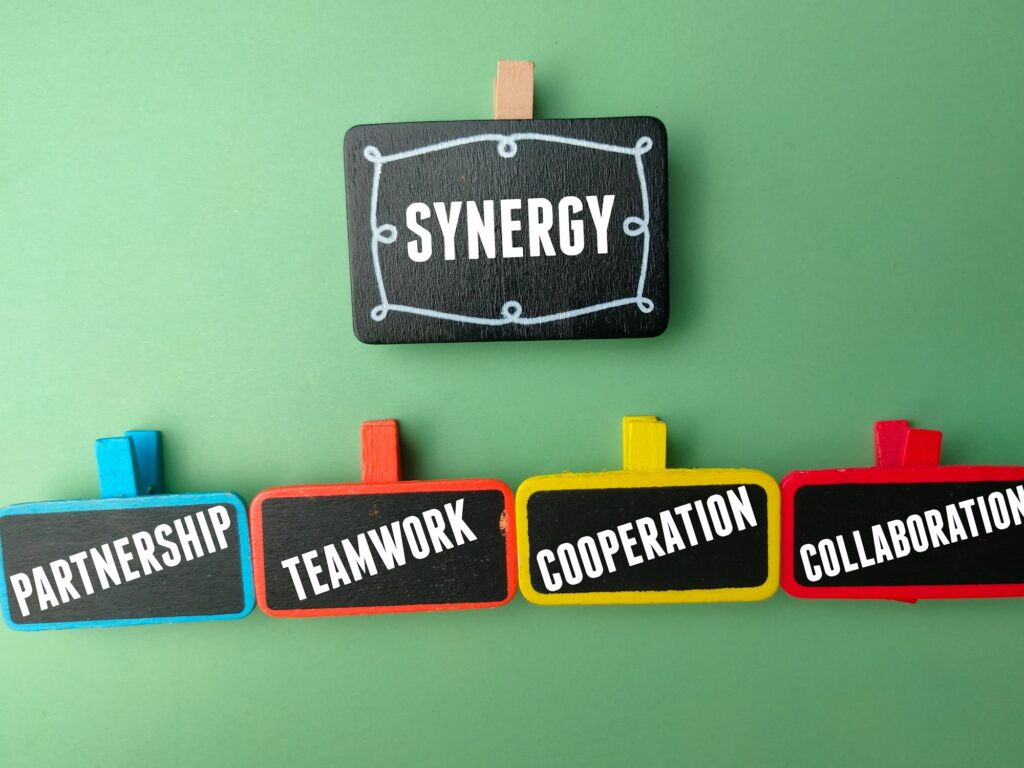
In an ever-evolving tech landscape, integrating DevOps into Agile project management can feel like trying to merge two puzzle pieces from different sets.
Yet, when done correctly, it magnifies the strengths of both methodologies, driving efficiency, collaboration, and innovation.
Imagine your development process as a well-orchestrated symphony, where DevOps and Agile principles harmonize to deliver superior software faster. Sound appealing? Let’s explore how you can make this symphony play in perfect unison.
“DevOps and Agile aren’t just buzzwords. They are transformative practices that, when integrated, can revolutionize your project management.” – Tech Guru
In this article, you’ll uncover:
By the end, you’ll be equipped to blend DevOps with Agile, creating a synergistic approach that enhances productivity and promotes continuous improvement. Ready to dive in?

Agile and DevOps, while distinct methodologies, share a common goal: enhancing the software development lifecycle. Agile focuses on iterative development and flexibility, empowering teams to adapt to changes swiftly.
DevOps, on the other hand, bridges the gap between development and operations, fostering a culture of collaboration and continuous delivery.
Think of Agile as the foundation where rapid, iterative progress occurs. DevOps builds on this by ensuring processes are automated, environments are standardized, and deployments are seamless.
This synergy results in faster delivery cycles, higher quality, and a product that truly meets customer needs.
Both methodologies emphasize collaboration, continuous improvement, and customer satisfaction. By integrating Agile’s iterative approach with DevOps’ focus on automation and operational efficiency, you can create a more robust and responsive development pipeline.
In essence, DevOps extends Agile principles into the realm of IT operations, crafting a unified framework that drives innovation while maintaining
Incorporating DevOps principles into an Agile environment can seem challenging, but it ultimately drives faster releases, improved collaboration, and higher quality products.
By understanding the core tenets of DevOps, you can effectively apply these concepts to bolster your Agile processes. This section highlights the key principles that will help you seamlessly dovetail DevOps with Agile methodologies.

Start by assessing the current state of your project management processes. Understand the workflows, identify bottlenecks, and determine areas where DevOps can bring improvements.
Once you’ve mapped out the current landscape, set clear goals for your DevOps and Agile integration. These goals will guide your implementation strategy and help measure success.
Getting buy-in from leadership is crucial. Communicate the benefits of integrating DevOps with Agile, such as faster delivery times and increased collaboration, to secure the necessary support and resources.
Foster a culture of collaboration and continuous improvement. Encourage cross-functional teams to work together, share knowledge, and strive for iterative enhancements. This cultural shift is essential for successful integration.
Choose the right tools and technologies that support both Agile and DevOps practices. Tools like Jenkins for CI/CD, JIRA for Agile project management, and Docker for containerization can streamline workflows and enhance productivity.
Start small by piloting DevOps practices in a single team or project. Learn from this implementation, iterate based on feedback, and scale up gradually. This approach minimizes risk and allows for more manageable changes.
Foster a Collaborative Culture: Encourage open communication and collaboration among all project stakeholders, including developers, operations, and quality assurance teams.
Automate Testing and Deployment: Implement automated testing and continuous integration/continuous deployment (CI/CD) to ensure faster and more reliable software releases.
Emphasize Continuous Feedback: Create a feedback loop that allows for immediate identification and resolution of issues, enhancing product quality and user satisfaction.
Adopt Agile Practices: Integrate Agile methodologies like Scrum or Kanban into your DevOps processes to enhance workflow efficiency and flexibility.
Utilize the Right Tools: Select and leverage tools that support both Agile and DevOps principles, such as Jenkins for CI/CD, Jira for project tracking, and Docker for containerization.
Focus on Incremental Changes: Promote incremental and iterative development and deployment to manage risks and adapt swiftly to changes.
Educate and Train Teams: Provide continuous learning opportunities for your teams to stay updated on best practices and new tools in the Agile and DevOps spheres.
Monitor and Optimize: Regularly monitor your processes and workflows, and use data-driven insights to optimize performance and efficiency.
Ensure Proper Documentation: Maintain clear and concise documentation to support ongoing development, facilitate knowledge sharing, and ease onboarding of new team members.
Celebrate Successes and Learn from Failures: Acknowledge team achievements and analyze failures to foster a culture of continuous improvement.
Configuration Management Tools: Tools like Ansible, Chef, and Puppet manage configuration files and environments, ensuring consistency across all developmental and operational processes.
Infrastructure as Code (IaaC): Tools such as Terraform and AWS CloudFormation allow you to manage and provision your infrastructure using code, promoting efficiency and repeatability.
CI/CD Tools: Jenkins, GitLab CI, and CircleCI enable continuous integration and continuous deployment, automating the testing and deployment pipeline.
Automation Tools: Tools like Selenium, JIRA, and GitHub Actions help automate workflows, reducing manual errors and enhancing productivity.
Monitoring and Analytics Tools: Solutions like Prometheus, Grafana, and Splunk provide vital insights into application performance, helping to quickly identify and fix issues.Coll

By merging DevOps with Agile project management, you’re setting the stage for a multitude of benefits that can take your development process to the next level.
Imagine a world where your teams collaborate seamlessly, delivering high-quality software faster than ever before. This isn’t some far-off dream; it’s the reality when DevOps and Agile methodologies work in tandem.
Whether you’re looking to accelerate time to market, enhance customer satisfaction, or boost revenue growth, the synergies created by these two powerful frameworks can help you achieve your goals. Let’s dive into the tangible advantages of integrating DevOps into your Agile practices.
Integrating DevOps into your Agile project management involves several systematic steps:
By following these steps, you’ll be able to effectively integrate DevOps into your Agile project management, ultimately leading to streamlined processes, better collaboration, and faster delivery of high-quality software.
DevOps brings several enhancements to Agile projects by enabling continuous integration and delivery. This leads to shorter development cycles and faster feedback loops, ensuring that code changes can be safely and swiftly deployed.
With automation, teams can reduce manual interventions, thereby improving accuracy and efficiency. Additionally, the collaborative culture fostered by DevOps lays the foundation for improved communication and teamwork, accelerating problem-solving and innovation.
Overall, integrating DevOps into Agile methodologies streamlines workflows, reduces bottlenecks, and drives higher quality and more rapid software releases.
The key to ensuring successful integration of DevOps in Agile environments lies in fostering a culture of collaboration, continuous feedback, and automation.
Begin by aligning your teams—ensure that development, operations, and quality assurance have shared goals and responsibilities. Cross-functional teams are crucial for breaking down silos and encouraging a holistic approach to project management.
Automation is another critical factor. Utilize tools that support continuous integration (CI) and continuous delivery (CD) pipelines, allowing your team to deliver features rapidly and reliably. Incorporate Infrastructure as Code (IaaC) to manage your environments and streamline operations.
Continuous feedback loops are vital. By regularly integrating user feedback and conducting sprint reviews, teams can make quick adjustments to improve the product. This adaptability ensures that the delivered software meets customer expectations and complies with evolving requirements.
Don’t overlook robust communication. Leveraging collaboration tools like Slack or Microsoft Teams can help maintain transparent and efficient communication channels. Regular stand-up meetings, retrospectives, and collaborative planning sessions will keep everyone on the same page.
Finally, provide ongoing training and support. Invest in skill development to keep your team up-to-date with the latest DevOps practices and tools. By prioritizing learning and adaptability, your team can better navigate the challenges of integrating new methodologies.
strength of Agile and DevOps lies in their shared objectives of rapid, high-quality delivery and customer value. Agile provides a framework for iterative development that focuses on collaboration, flexibility, and customer feedback, enabling teams to pivot quickly.
Meanwhile, DevOps extends these Agile principles into the realm of IT operations, emphasizing continuous integration, delivery, and automation.
This synergy means that Agile lays the groundwork for agile development practices while DevOps ensures those practices are sustained through automated workflows and consistent environment setups.
Together, they create a seamless pipeline from development to deployment, fostering a culture of collaboration and continuous improvement.
By combining Agile’s iterative approach with DevOps’ operational efficiency, teams can achieve faster releases, higher-quality software, and enhanced responsiveness to customer needs.
Transitioning from traditional Agile to Agile with DevOps requires a well-thought-out strategy. Begin by educating your team on the principles and practices of DevOps.
Emphasize the importance of collaboration and continuous integration/deployment. Next, assess your current workflow and identify areas that can be optimized with DevOps methodologies.
Start with small, incremental changes. Introduce DevOps practices gradually, such as automating deployment processes or integrating continuous testing within your sprints.
These manageable steps will help your team gain confidence and build competence in the new processes.
Next, focus on adopting the right tools and technologies that facilitate seamless integration of DevOps into your Agile framework. Tools like Jenkins, Docker, Kubernetes, and Azure DevOps can streamline your processes and enhance productivity.
Cultural shift is another cornerstone for a successful transition. Encourage a culture of open communication, ownership, and continuous learning. This cultural alignment ensures that all team members are working toward common goals and understand the benefits of the Agile-DevOps synergy.
Finally, regularly review and iterate on your processes. Continuous improvement is at the heart of both Agile and DevOps. Gather feedback from your team and stakeholders, analyze metrics, and make necessary adjustments to refine your approach. This iterative process ensures you stay aligned with your objectives and continually enhance your workflow.
By following these steps, your organization can successfully transition from traditional Agile to a collaborative, efficient Agile-DevOps environment.
As we’ve explored, integrating DevOps into Agile project management is not just a trend but a strategic approach that brings numerous benefits.
By adopting DevOps practices, you can enhance collaboration, improve code quality through tools like JUnit and JMeter, and streamline your continuous integration process with platforms like TeamCity.
Agile methodologies combined with these DevOps tools foster a culture of continuous improvement, ensuring value and reducing risks with each release.
Moreover, leveraging tools such as SpiraTest and Rapise can further simplify your testing and release processes, thus enhancing your product offerings.
The synergy between Agile and DevOps ultimately leads to more reliable and efficient workflows, transforming how your team delivers software.
Embrace this powerful combination to drive your projects forward. Not only will your team benefit from increased efficiency and reduced overhead, but your end product will also be more robust and better aligned with customer needs.



